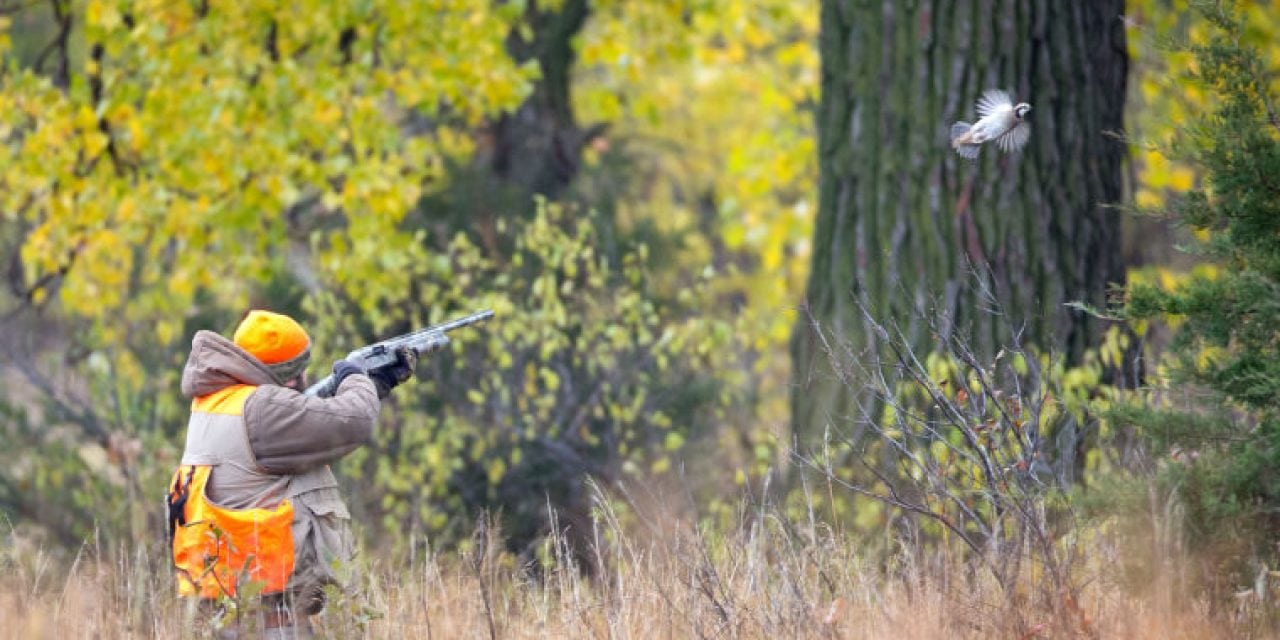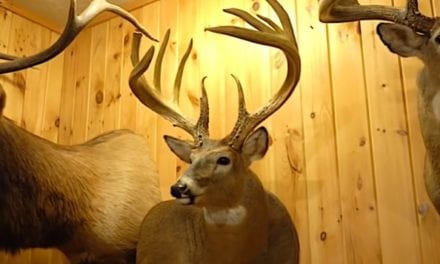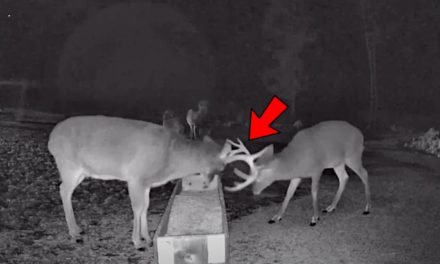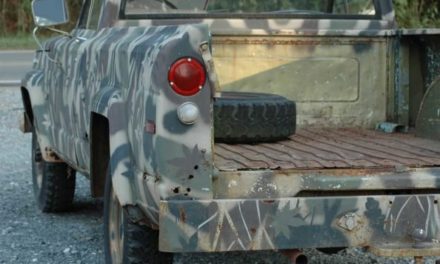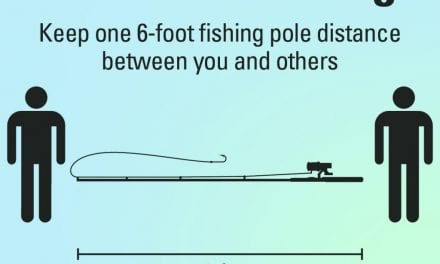It is like no other form of hunting.
It is exhilarating, action-packed, and humbling to even the most practiced shotgun shooter!
I should know. I grew up with it on our southeastern Nebraska farm.
What kind of hunting is it?
IT is hunting the northern bobwhite quail.
Have you ever hunted quail?
It’s awesome! You need to try it. And, their numbers this year look outstanding!
Flushing a covey of quail is as exciting as any outdoor activity gets! However, from years of first-hand experience I will also tell you that quail hunting demands strategy, fitness, stamina, good dog work, optimum shotgun shooting ability and knowledge of the bird and its habitat.
It truly is like hunting no other game bird. And, this is the season to either discover or re-discover the fun of quail hunting in the Cornhusker State. But, how? Where does a hunter learn or re-learn the process to become a successful Nebraska bobwhite quail hunter?
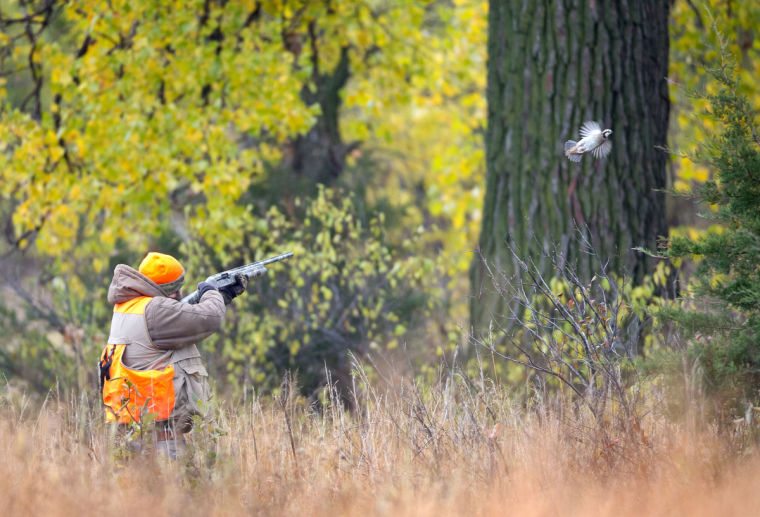
You’ve come to the right place.
First, let’s examine the bird.
About the Bird
The bobwhite is small, ground-dwelling quail with a rounded body, small head, rounded wing, and short tail. It is known for its emphatic, whistled “bob-white” ringing from a rural grassy field or thicket in the summer.
The bobwhites are intricately patterned in brown, reddish-brown, buff, and black. Males have a bold black-and-white head pattern. Females have a buffy throat and eyebrow.
Northern Bobwhites travel in coveys and run across the ground from the shelter of one shrubby patch to another. When they are flushed, they explode into flight with quick wing-beats and then duck into the nearest cover.
In Nebraska, the northern bobwhite quail (Colinus virginianus) is most common in the southeastern through south central regions of the state, but can also be found in the southwest and portions of northeastern and central Nebraska.

It is found in the highest densities in the southeastern counties and along wooded river and creek drainages flowing through diversified farm country, especially the Republican, Platte and Elkhorn rivers.
Looking at the big picture, the Cornhusker State is situated on the northwestern edge of the bobwhite’s North American range.
When it comes right down to it, the northern bobwhite quail is a native, non-migratory, webless game bird species to Nebraska that thrives where shrubs and trees meet grassland, cropland and weedy areas. An ideal quail area would have a mixture of these four habitat components. It’s a diversified rural landscape, it’s just that simple. And, like several other animals, quail are known as an edge species. In essence, they prefer reasonably dense cover within walking distance of food. During hunting season, the primary food for quail will be weed seed and waste grain in the field.
During periods with consecutive mild winters, research shows the bobwhite even expands into marginal habitat.
The Outlook
So is the hunting outlook for this year’s bobwhite quail hunting season in Nebraska really that good?
Yes, it is!
Northern bobwhite quail abundance again increased statewide and in most regions of the state compared to 2016, based on the July Rural Mail Carrier and Whistle Count Surveys.
“Quail numbers are near all-time highs over much of their range in Nebraska, so this should be an excellent year for quail hunters and those interested in becoming quail hunters,” says Jeff Lusk, Upland Game Program Manager for the Nebraska Game and Parks Commission.
“This should be the best year for quail in quite a long time, adds Lusk. “It’s been about 20 years or more since quail populations have been this high.” It would be a fantastic year to discover or rediscover hunting the northern bobwhite quail in Nebraska,” he emphasizes.
I can certainly vouch for Jeff’s outlook and share his enthusiasm, particularly when it comes to our southeastern Nebraska farm! We have been seeing more coveys of quail and more birds in the coveys, again this year. It’s been sometime since we have seen this many bobwhites!
The bobwhite is among the most popular game birds in the state, second only to the ring-necked pheasant. Many Nebraska hunters think of quail as sort of a “bonus” game bird encountered while hunting rooster pheasants. Dedicated quail hunters, though, use specialized equipment and techniques to maximize the opportunity to flush coveys and work single birds.
Besides the proper shotgun and shells, good shotgun shooting skills, and possibly an effective bird dog, an understanding of the quail’s daily routine, behavior and habitat requirements greatly increase the chances for hunter success.
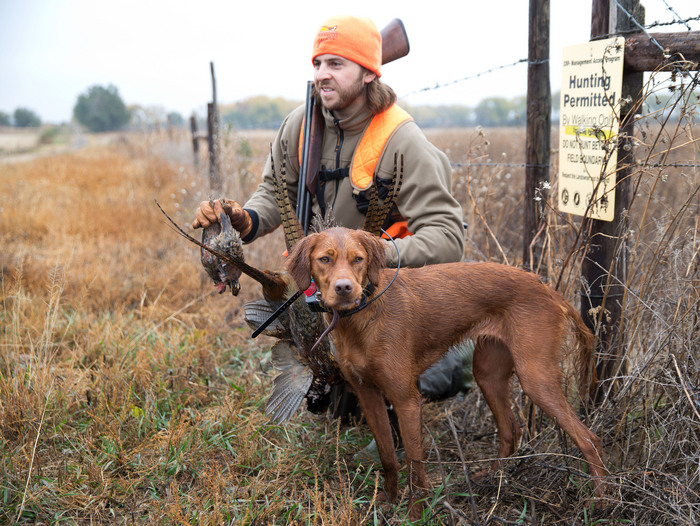
The Bobwhite’s Routine
Knowing the patterns of the northern bobwhite are critical for hunting success. In fall and winter, bobwhites settle into a daily routine. At night, bunches or coveys roost in grassy areas near woody cover. Around sunrise and just before leaving the roost, one or two adult male quail give a covey call or whistle, vocalized as “koi-lee,” letting other coveys of quail in the area know of their location in order to space themselves across the landscape reducing competition for food and cover. Shortly after that, the covey leaves its night roost to feed.
Generally, quail feed mostly in corn, soybean and grain sorghum fields near grasslands where they have roosted. As winter arrives and waste grain gets harder to find, they rely more on seeds from plants such as ragweed, sunflower, dogwood and Osage orange. If food is abundant, the birds can satisfy their appetites quickly and move back into cover in a short time. If you’re wondering, quail typically get all the water they need from morning dew or small watering holes or creek pools. At midday, quail move to loafing areas with decent overhead or canopy cover, usually grassy or weedy areas adjacent to brushy or woody cover (e.g. plum and chokecherry trees) with thick undergrowth and as close as possible to the fields where they feed. They remain in those loafing areas until late afternoon or early evening, when they venture out to feed before returning to their night roosts.
Those of us who are seasoned quail hunters are never in a rush to begin hunting when the legal shooting hour starts in the morning. We sleep in, go have breakfast, swap stories, talk about hunting strategy and then take to the field about two hours or more after sunrise. This offers quail coveys a chance to leave the roost, feed and return to good cover actually making it easier for the dogs to find fresh scent. The other productive time to pursue bobwhites is about two hours prior to sunset.
Best Weather
What is the best weather for quail hunting? When should you go? You go hunting when you have the time available and when you can safely go according to the weather forecast, right? Correct. However, there is no question that hunting northern bobwhite quail is at its absolute best on a cool day after some wet weather, or just after a light snow or hoarfrost when moisture improves the scenting conditions for dogs. Also, quail burst into the air from the ground more readily in windy weather than on calmer days, and when possible, quail hunters should always face and walk into the wind to reduce noise distractions, and improve the dog’s chances of scenting birds. This tactic also helps a dog to hear running quail.
Finding Quail
Find the food and the bobwhites will not be far. Bobwhite quail can usually be found in or near their feeding areas during the hunting season. Grassy waterways, old abandoned farmsteads, hedgerows, shelter belts, wooded draws and creek banks near corn, soybean, wheat or grain sorghum fields are good places to try to locate them. In southeast Nebraska counties, I have always preferred to look for quail in loafing habitat like grassland acres that abut harvested cornfields but separated by a weedy fence line with a timbered, thicket-like creek bottom nearby.
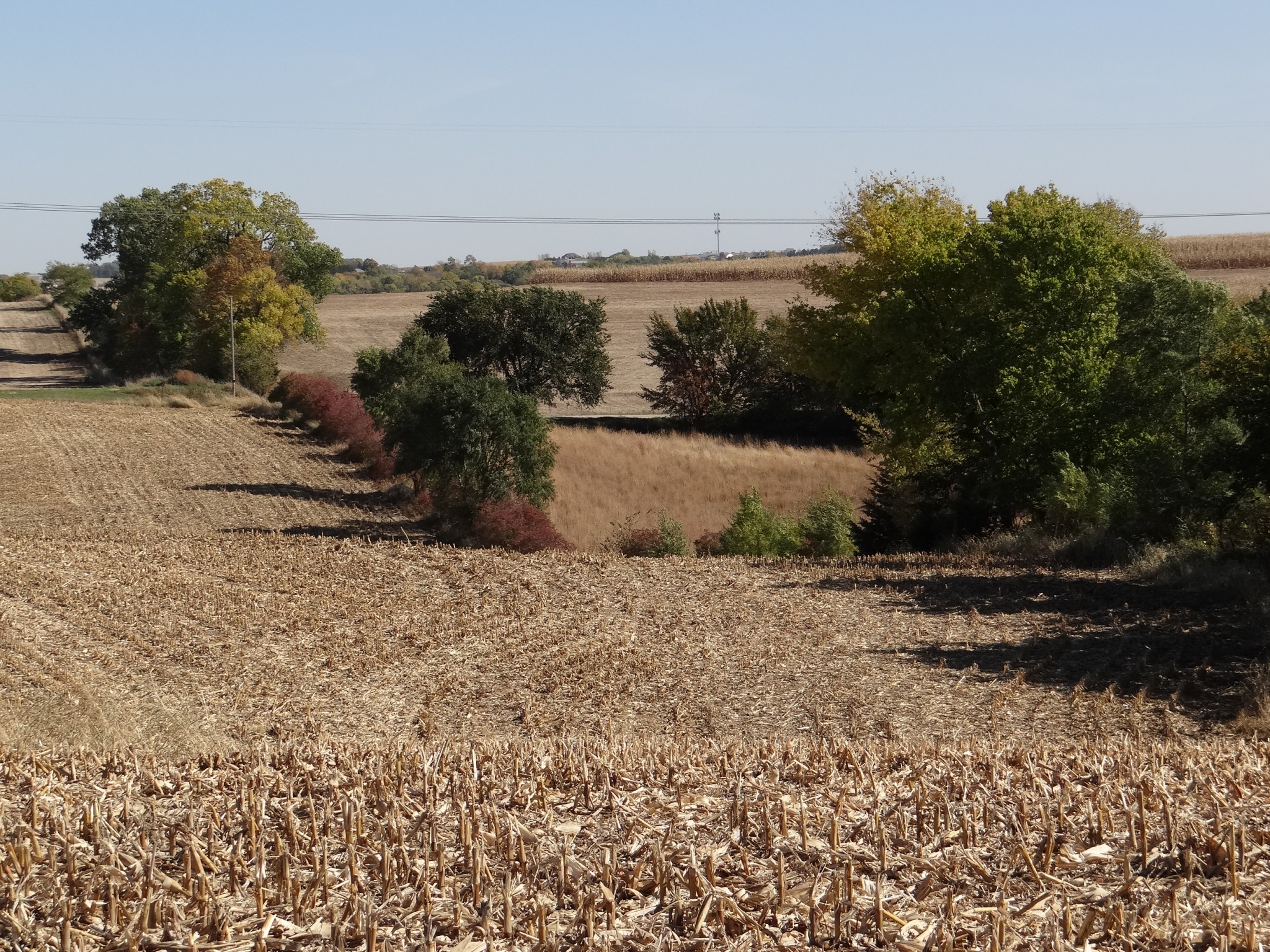
Quail often use those weedy or brushy fence lines as travel lanes and midday loafing sites, and similar to pheasants, initially attempt to out-run hunters and dogs before flushing on the side of a plum thicket or hedgerow opposite the hunter. So, positioning a hunter on each side of that bramble-filled fence row ensures that at least one hunter will have a clear shot when the birds flush. it is important to note that when a covey flushes within range, pick out a single bird, and don’t rush the shot. Be vigilant for birds still on the ground even after a flush!
The Bobwhite’s Behavior
One thing that is interesting is that bobwhites are creatures of habit. Quail coveys normally are in the same places year after year as long as the habitat remains constant and the weather conditions are favorable. They will eat or rest at the same time each day and typically fly the same escape routes when they flush, no kidding! Individual quail will leave their home range during the mating season, but one mate or the other will be in the same habitat as the previous year. During the hunting season, the covey may move from one primary location to another within a few hundred yards, but as long as the habitat is suitable, the birds will stay in that general area.
I think in some respects quail are easier to hunt early in the season when cover is abundant and immature birds are less wary than the adult birds and are more apt to hold for a dog. Later, after periods of frigid weather and snow, quail seek heavier, woody cover.
Other Key Tips for Quail Hunting
Be in shape. Of course, the quail hunter’s dog needs to be in shape, but the bobwhite quail hunter also needs to be in good physical condition. The “quailer” is constantly on the move. Pushing through bramble, crawling over downed trees, repeatedly crossing fences, and slogging through dense, wooded creek bottoms are all part of the hunt. The quail hunter needs to maintain an adequate fitness level to be able to handle the demands of the field.
Select a single. Flushing a covey of quail is as exciting as any activity in shooting. When you locate a covey of quail, they will typically flush from a very small area, no more than a few square feet. Take a mental note of the number of birds that flush, pick a single bird, shoot, pick a second bird, shoot, mark downed birds, and watch the flight path of the remaining birds. All this will occur in 2 to 3 seconds.
Shhh. Stay as quiet as you can be. Quail rely on their hearing to detect danger. They will travel hundreds of yards away to escape, resulting in you having a more complicated hunt.
Check for Tracks. Look for fresh tracks. Always look for fresh signs of quail tracks to tell if they are in the area. Old tracks or no tracks probably mean there are no quail around.
Use a lightweight, open-choked shotgun. A lightweight, fast swinging shotgun with an open choke works well for hunting the bobwhites. Most of us avid quail hunters use #7½ or #8 bird shot.
Practice, practice, practice. Quail are skillful flyers, and will offer only quick shots. Practicing on the shooting range should include throwing targets at various angles with the gun at ready rather than shouldered. To simulate confusion of covey rise, throw multiple targets in rapid sequence.
Be seen and know shooting lanes. Because the quail are found in very heavy cover, tall enough to conceal hunters, and coveys flush briskly, each hunter needs to know the location of other hunters and pre-establish safe shooting lanes. Blaze orange hunting clothing is a must will help all hunters maintain visual contact.
No low flyers. Never shoot a low flying quail. Shooting at a low flying quail could cause you to lower your muzzle below a horizontal plane with the ground. Doing this could end up taking the life of one of your dogs! Besides, after the covey’s initial “lift off,” their flight will level out, and this is when you should aim and shoot.
Good dog, big asset. A good, well-conditioned hunting dog is a huge asset with quail. By exercising and preparing your dog for days in the field, each hunt will be much more enjoyable and successful. Work the dog on holding point and searching for simulated downed birds. When you get in the field, a trained dog that uses a slow approach with careful search of bobwhite habitat will produce the most birds.
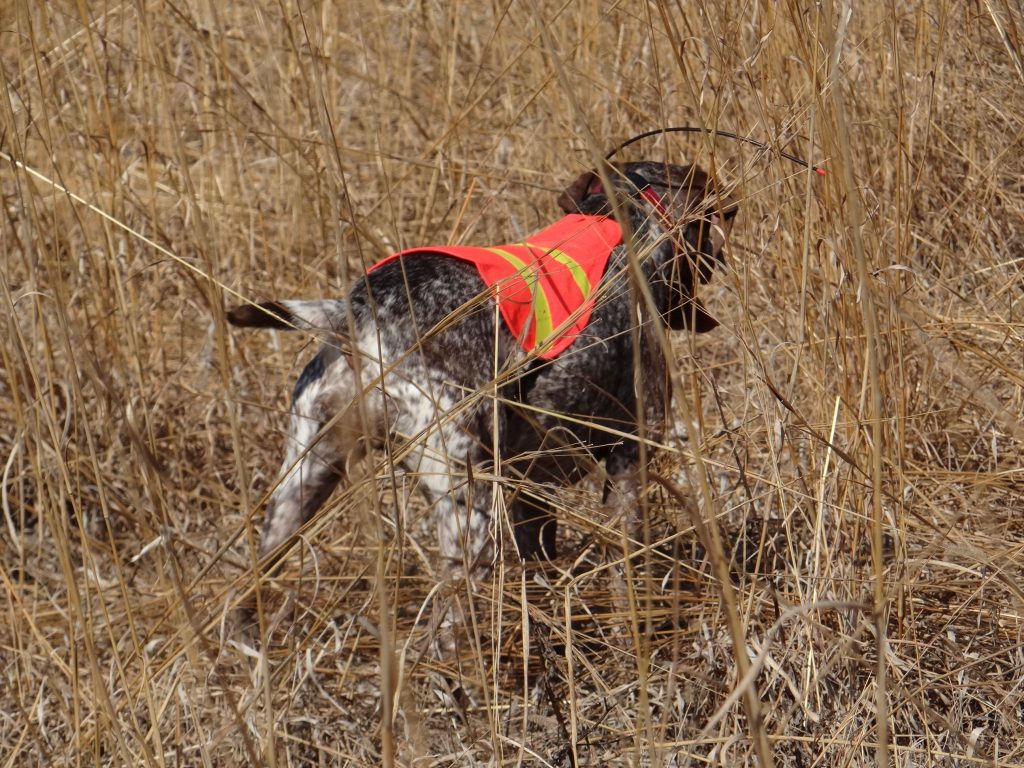
Find downed birds. Northern bobwhite quail are a precious, valuable wildlife resource, and hunters should make every attempt to find each downed bird. Don’t rely on your dog to see it fall, as it may be difficult for the dog to see a downed bird in heavy cover. Mark the location of the bird and direct your dog to that spot for the best opportunity to retrieve it. If not found immediately, mark the spot with a blaze orange hat or glove and proceed in slowly increasing circles. Listen for “fluttering wings” of a wounded bird that has hidden.
Field care for quail. Quail are small birds and will generally cool quickly if you decide not to field dress them until the end of the day. It is a good idea though to remove the internal organs in a timely manner. This will reduce the amount of material from the intestines that may penetrate into the meat. By simply splitting the skin between the end of the breast bone and the tail, and folding the bird open, all organs can be quickly removed.
From watching a good bird dog work a variety of habitat to the heart-stopping thrill of a a dozen or more quail exploding into flight from the ground, few experiences in the hunting lifestyle can match quail hunting, and with the numbers high, this is the year to become a “quailer!”
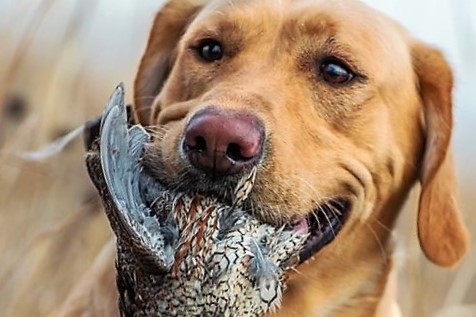
The post The Year to Become a Quailer appeared first on NEBRASKALand Magazine.

